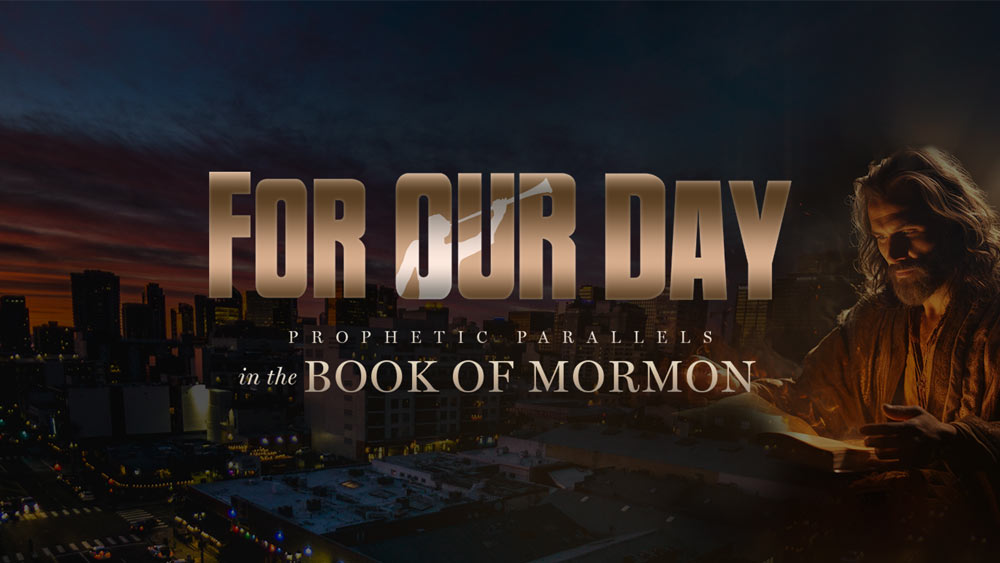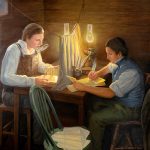What do we learn about Book of Mormon geography from Joseph Smith and the story of Zelph? Is the Zelph account authentic? Watch the first LDS101 video exploring the Zion’s Camp Zelph history and it’s relation to Book of Mormon geography.
Associated Locations:
- Zelph Mound, near the Illinois River
Associated Dates:
- June 2-3, 1834 – Zelph Mound found
Video:
Transcript:
According to modern LDS culture the entire Book of Mormon account transpired over a small region in central America. However, a great body of evidence indicates that these events more likely occurred in North America. The following series presents some of this evidence, beginning with what is known as the Zelph account.
The Zelph incident occurred during the Zion’s Camp march of 1834. Zion’s Camp was an expedition of faithful volunteers led by Joseph Smith from Kirtland, Ohio to Clay County, Missouri in an attempt to regain land from which the Saints had been expelled. The march afforded a number of valuable experiences to those participating, including a knowledge of Zelph.
On June 3rd, while passing through southern Illinois the company came across an ancient burial mound overlooking the Illinois river. Digging into the mound the brethren found the skeletal remains of an ancient warrior. The account found in the History of the Church records,
“…between his ribs [was] the stone point of a Lamanitish arrow, which evidently produced his death. The visions of the past being opened to my understanding by the Spirit of the Almighty, I discovered that the person whose skeleton was before us was a white Lamanite. A large, thick-set man, and a man of God. His name was Zelph. He was a warrior and chieftain under the great prophet Onandagus who was known from the Hill Cumorah or eastern sea to the Rocky Mountains….He was killed in battle by the arrow found among his ribs, during the last great struggle of the Lamanites and Nephites.”
Some question the historical accuracy of Zelph accounts but there are several written records of this incident; Wilford Woodruff, Heber C. Kimball, George A. Smith, Levi Hancock, Moses Martin and Reuben McBride all share similar narratives and are corroborating witnesses. The Prophet Joseph also wrote a letter to Emma Smith dated June 4, 1834 detailing the occurrence. This was only one day following the Prophet’s revelation concerning Zelph. It was written in his own hand and includes his personal signature. The Prophet’s deep feelings and clear understanding of Book of Mormon geography is clearly evident. He writes,
“The whole of our journey, in the midst of so large a company of social honest and sincere men, wandering over the plains of the Nephites, recounting occasionally the history of the Book of Mormon, wandering over the plains of the Nephites, recounting occasionally the history of the Book of Mormon, roving over the mounds of that once beloved people of the Lord, picking up their skulls & their bones, as a proof of its divine authenticity, and gazing upon a country the fertility, the splendor and the goodness so indescribable, all serves to pass away time unnoticed.”
In these written accounts the Prophet clearly states,
Zelph, a white Lamanite, died in Illinois.
The Great Prophet Onandagus was known from the Hill Cumorah in up-state New York to the Rocky Mountains.
The last great struggle of the Nephites and Lamanites extended from at least Illinois to New York in North America.
They were traveling on the same plains as those previously occupied by the Nephites.
Many if not all of the mounds found in the Heartland of North America were built by the Nephites.
The bones of the Nephites and Lamanites could be found in Illinois and Missouri during the travels of Zions Camp.
According to the Prophet Joseph Smith, all of these historical events involving the Nephites and Lamanites occurred in North America.
Some question the understanding of Joseph Smith concerning Book of Mormon geography, but who would know better than the Prophet where Book of Mormon history occurred?
The Prophet’s mother Lucy Mack Smith gave this support to her son’s intimate knowledge concerning Nephite life. She states:
“During our evening conversations, Joseph would occasionally give us some of the most amusing recitals that could be imagined. He would describe the ancient inhabitants of this continent, their dress, mode of traveling, and the animals upon which they rode; their cities, their buildings, with every particular; their mode of warfare; and also their religious worship. This he would do with as much ease, seemingly, as if he had spent his whole life with them.”
Not surprisingly, the Zelph account fits well with other evidence of a North American Book of Mormon setting. The Hill Cumorah is next in this series of videos featuring the hill, it’s cave accounts and how they relate to Book of Mormon geography.









3 Responses
Awesome! Very informative. 🙂
As I read this article, I waited anxiously for the evidence. It didn\’t come! The brief quote of Joseph had NOTHING to do with the Zelph account. In fact, it didn\’t even mention Zelph at all. Other web sites have ALL the accounts of ALL the other witnesses at the camp, and that other website states that the Prophet Joseph NEVER wrote of the Zelph account. Furthermore, many of the assumptions made in this article that claims that Joseph \"clearly states\" weren\’t stated by Joseph at all!
LDS Church leaders have stated that the purpose for the Book of Mormon isn\’t to establish geography, but to establish theology. Any one who states otherwise is \"looking beyond the mark\"!
Your point is interesting, but the source of Joseph Smith’s account does exist, and is supported by multiple witnesses. Joseph Smith wrote a 7 book series called “History of the Church”. In book 2, page 79, you’ll find his entire account of the experience, along with his testimony of Zelph, and what he did, in his words. Wilford Woodruff, Heber C. Kimball, George A. Smith, and some others, all speak of hearing him tell them the Zelph account, and you can find Wilford Woodruff’s in the “Documentary History of the Church”. So I’m not sure which websites you used to find this, but these are the official sources. To finish my point, the word Zelph is indeed said, twice, in Joseph’s account.